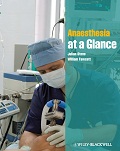A 73-year-old man requires elective open repair of an abdominal aortic aneurysm. He has widespread vascular disease with history of angina in the past. He also had a transient ischaemic attack 3 months ago. In addition, he has insulin-dependent diabetes mellitus. His exercise tolerance is only 50 metres and is limited by claudication pains in the leg and buttock.
-
1. He has a normal ECG. Does this rule out significant heart disease?
Show Answer
Correct answer:
No. It is possible to have an entirely normal resting ECG and critical ischaemic heart disease.
-
2. His cardiologist says his coronary artery disease has worsened. Why might his chest pain be less, rather than more, common?
Show Answer
Correct answer:
Autonomic neuropathy.
-
3. He is sent for cardiopulmonary exercise testing but he manages very little exercise because of claudication pain. How else might assessment be made of the severity of his ischaemic heart disease?
Show Answer
Correct answer:
Pharmacological stress tests may be used, such as dipyridamole thallium scanning or dobutamine stress echocardiography. Echocardiography may also give an indication of previous MI, and overall assessment of left ventricular function with an indication of wall motion abnormalities (itself an indicator of ischaemic heart disease).
-
4. On examination he has a left carotid bruit. What is the significance of this finding?
Show Answer
Correct answer:
He is at risk of further cerebrovascular events and should be investigated (e.g. duplex Doppler) and possibly have this lesion repaired prior to his leg surgery.
-
5. What are the risks and benefits of an epidural in this patient?
Show Answer
Correct answer:
Benefits: good analgesia and increased flow to limbs (due to sympathectomy). Reduction in pulmonary complications. Possibly reduced blood loss, pulmonary embolism and improved glucose control.
Risks: risk of epidural catheter insertion/ removal with drugs that may affect clotting/ platelet function. Hypotension in a patient with ischaemic heart disease.
-
6. In addition to standard monitoring a decision is made to use oesophageal Doppler. What information can be derived from this device?
Show Answer
Correct answer:
An oesophageal Doppler allows flow measurements to be made, i.e. cardiac output and stroke volume.
Additional information: This allows calculation of oxygen delivery and also permits optimization of stroke volume via goal-directed fluid therapy. Both are useful in optimizing cardiovascular status, which has a beneficial effect on outcome following major surgery.
-
7. What physiological changes would you expect to occur during clamping and unclamping of the aorta?
Show Answer
Correct answer:
Clamping: increase in afterload, hypertension and reduction in cardiac output.
Unclamping: hypotension, with acidosis (metabolic and respiratory) and hyperkalaemia from ischaemic limbs.

